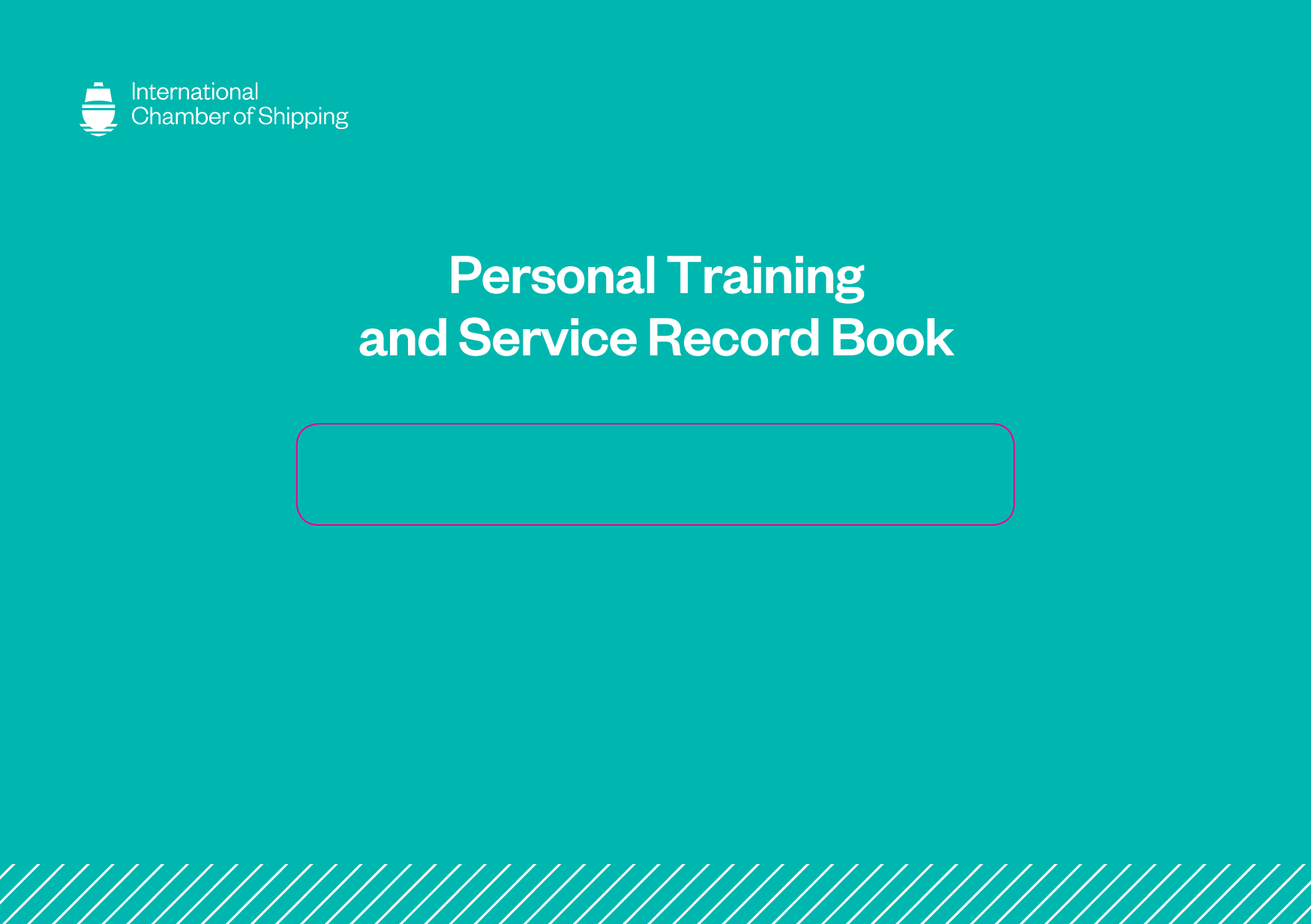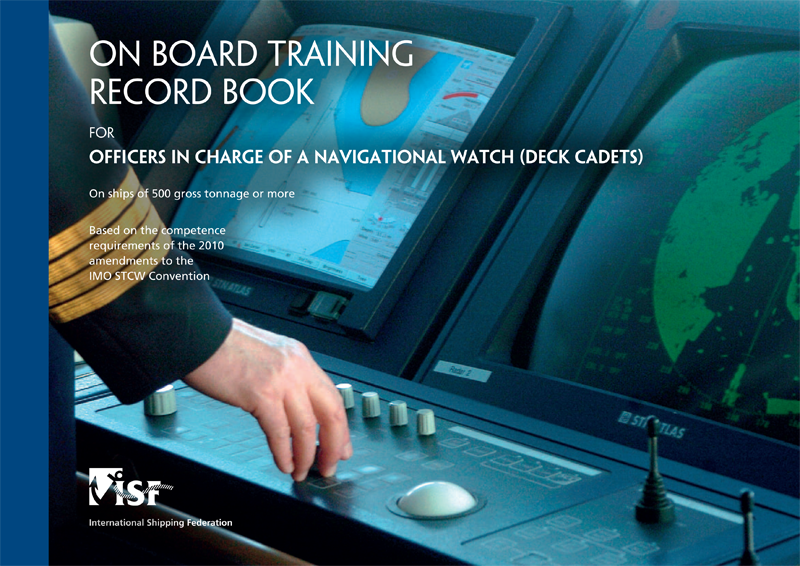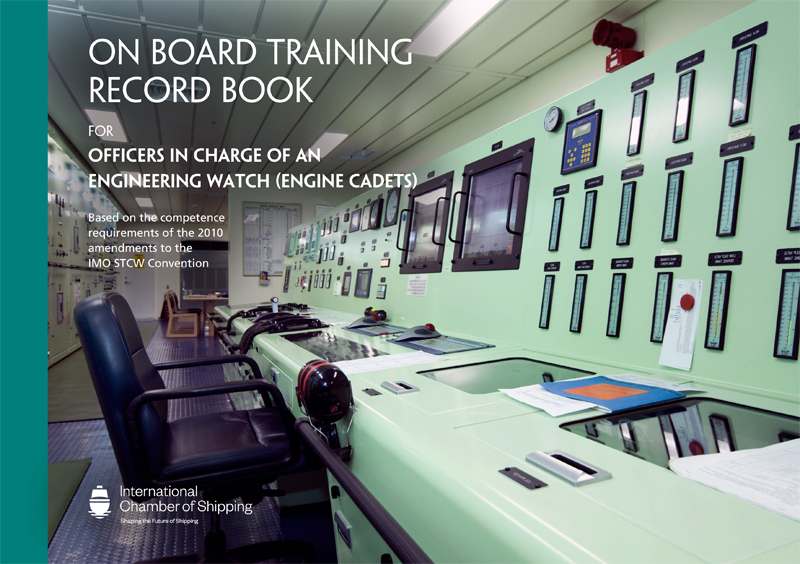In stock
Personal Training and Service Record Book
£ 15
This Record Book is intended to help all qualified seafarers maintain a comprehensive record of their seagoing service, ongoing training and other relevant information. It will also help companies ensure that documentation and data concerning seafarers employed on their ships is properly maintained and readily accessible, in order to demonstrate compliance with the IMO STCW Convention.
This Record Book also enables seafarers to maintain a record of their participation in drills and exercises on board ships. It may also be used by companies as part of their Safety Management System (SMS) as required under the ISM Code, in particular for the identification and recording of any training, drills and exercises conducted to support the SMS. It provides an additional record for seafarers and companies in the event of Port State Control inspections, and may serve as evidence of continuing professional competence when seeking to revalidate STCW certificates.
This second edition takes full account of the 2010 amendments to the STCW Convention and the entry into force of the ILO MLC. It also includes a section to record participation in drills and exercises on safety, security and pollution prevention (previously provided as a supplementary book in the first edition).
The Personal Training and Service Record Book is available in digital version from MarinePALS.
Additional Information
| Author | International Chamber of Shipping |
| Publisher | International Chamber of Shipping Publications |
| Edition | Second Edition |
| Publication month | 2017 - August |
| ISBN | 978-1-913997-22-9 |
| Shipping Weight | 150g |
Resources
Contents
Background and Purpose Certificates and Other Documentation General Instructions and Review of Record Book Personal Details Medical Fitness Medical Information STCW 2010 Certificates STCW 1995 Certificates STCW 1978 Certificates Training for Radiocommunication, Emergency, Occupational Safety, Security, Medical Care and Survival Functions Special Training for Specific Types of Ships Flag State Endorsements Updating Training Other Training Seagoing Service Ship-Specific Familiarisation Safety Familiarisation Security Familiarisation Special Seagoing Experience Drills and Exercises Safety, Security and Pollution Prevention Drills and Exercises Dates of Participation in Drills and Exercises Review of Record Book |
Foreword
Introduction
Background International standards regarding the training and certification of seafarers are set out in the IMO International Convention on Standards of Training, Certification and Watchkeeping for Seafarers (STCW), 1978, as amended, and the ILO Maritime Labour Convention (MLC), 2006. The STCW Convention is a comprehensive set of international regulations intended to ensure that seafarers are qualified and competent to perform their functions, duties and responsibilities on board ships. It establishes international minimum requirements for the training and certification of seafarers. In 2010, the STCW Convention was amended by IMO to reflect developments and emerging technologies in the industry. This included updating certain standards of competence and introducing several new certificates and training requirements. The MLC is a comprehensive set of international regulations intended to ensure worldwide protection of the rights of seafarers, and to establish a level playing field for countries and shipowners committed to providing decent working and living conditions for seafarers. Amongst the many areas covered, the MLC includes provisions concerning seafarer training and medical certificates. International standards to ensure safety at sea and the protection of the marine environment are found in the IMO International Convention for the Safety of Life at Sea (SOLAS), 1974, as amended, and the International Convention for the Prevention of Pollution from Ships (MARPOL), 1973, as amended. SOLAS contains mandatory requirements for drills and exercises to be carried out on board ships. The International Management Code for the Safe Operation of Ships and for Pollution Prevention (ISM Code) requires companies to ensure that ships are manned with qualified, certificated and medically fit seafarers, and to establish programmes for drills and exercises to prepare for emergency actions. Security-related drills and exercises are also required under the International Ship and Port Facility Security Code (ISPS Code). Purpose The Personal Training and Service Record Book is intended to assist seafarers by providing a comprehensive record of their seagoing service, qualifications, experience and other information. It is also intended to help companies ensure that documentation and data relevant to seafarers employed on their ships is maintained and readily accessible, including information on experience, training, medical fitness and competency in assigned duties. The use of this book also enables seafarers to maintain a record of their participation in drills and exercises on board ships. It may also be used by companies as part of their Safety Management System (SMS) as required under the ISM Code, in particular for the identification and recording of any training, drills and exercises conducted to support the SMS. This book does not prejudice the need to keep and maintain other records required in accordance with relevant international standards, or to carry seafarer certificates and other documentation on board ships. It is intended to provide an additional record for seafarers and companies in the event of inspections, and may serve as supplementary evidence of continued professional competence when seeking to revalidate certificates. This second edition of the Personal Training and Service Record Book updates and replaces the first edition, taking account of the 2010 amendments to the STCW Convention and the entry into force of the MLC. In the first edition, the section to record participation in drills and exercises was provided as a supplementary book. |




